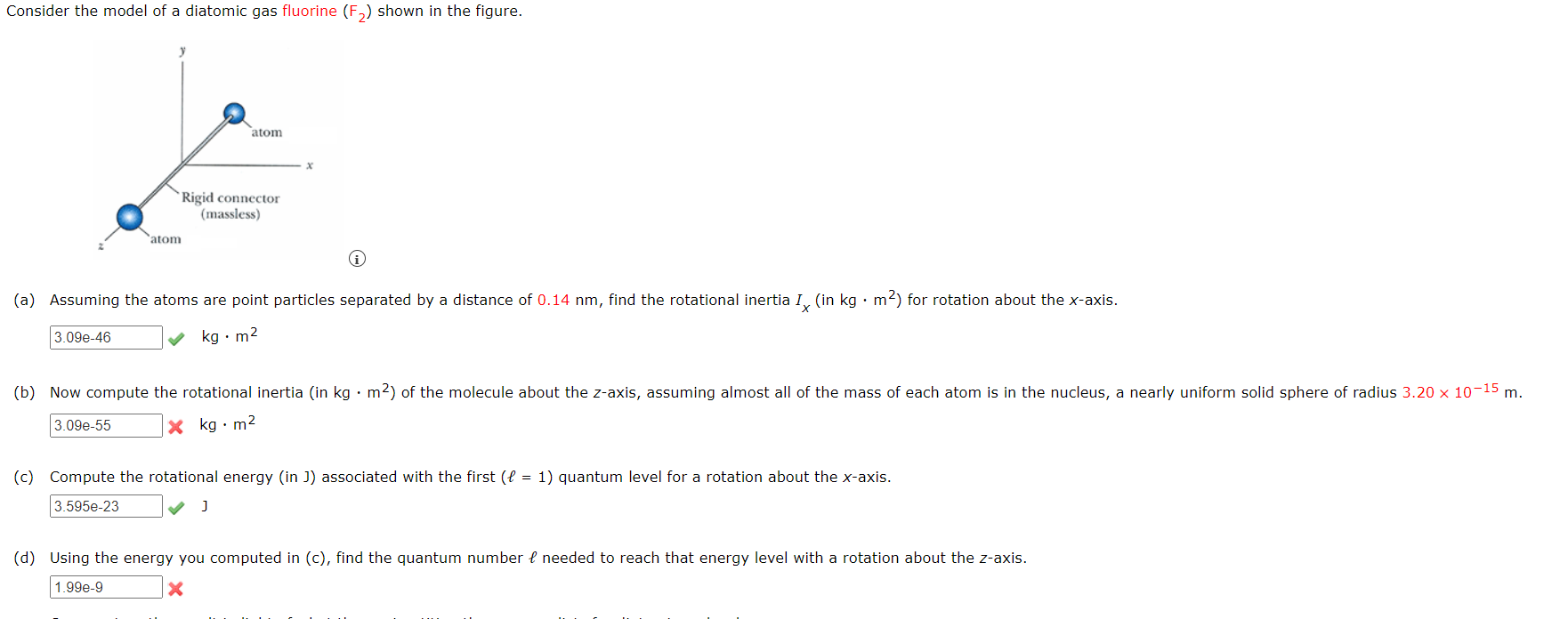Home /
Expert Answers /
Advanced Physics /
consider-the-model-of-a-diatomic-gas-fluorine-left-f-2-right-shown-in-the-figure-a-pa593
(Solved): Consider the model of a diatomic gas fluorine \( \left(F_{2}\right) \) shown in the figure. ) (a) ...
Consider the model of a diatomic gas fluorine \( \left(F_{2}\right) \) shown in the figure. ) (a) Assuming the atoms are point particles separated by a distance of \( 0.14 \mathrm{~nm} \), find the rotational inertia \( I_{X} \) (in \( \mathrm{kg} \cdot \mathrm{m}^{2} \) ) for rotation about the \( x \)-axis. \( \mathrm{kg} \cdot \mathrm{m}^{2} \) \[ \text { ? } \mathrm{kg} \cdot \mathrm{m}^{2} \] (c) Compute the rotational energy (in J) associated with the first \( (\ell=1) \) quantum level for a rotation about the \( x \)-axis. J (d) Using the energy you computed in (c), find the quantum number \( \ell \) needed to reach that energy level with a rotation about the \( z \)-axis. \( x \)
Expert Answer
(a) Given data : The atoms are point particles are separated by a distance, r=0.14nm=1.4×10?10m The mass of a fluorine(F2) in kg is, m=3.155×10?26kg T
